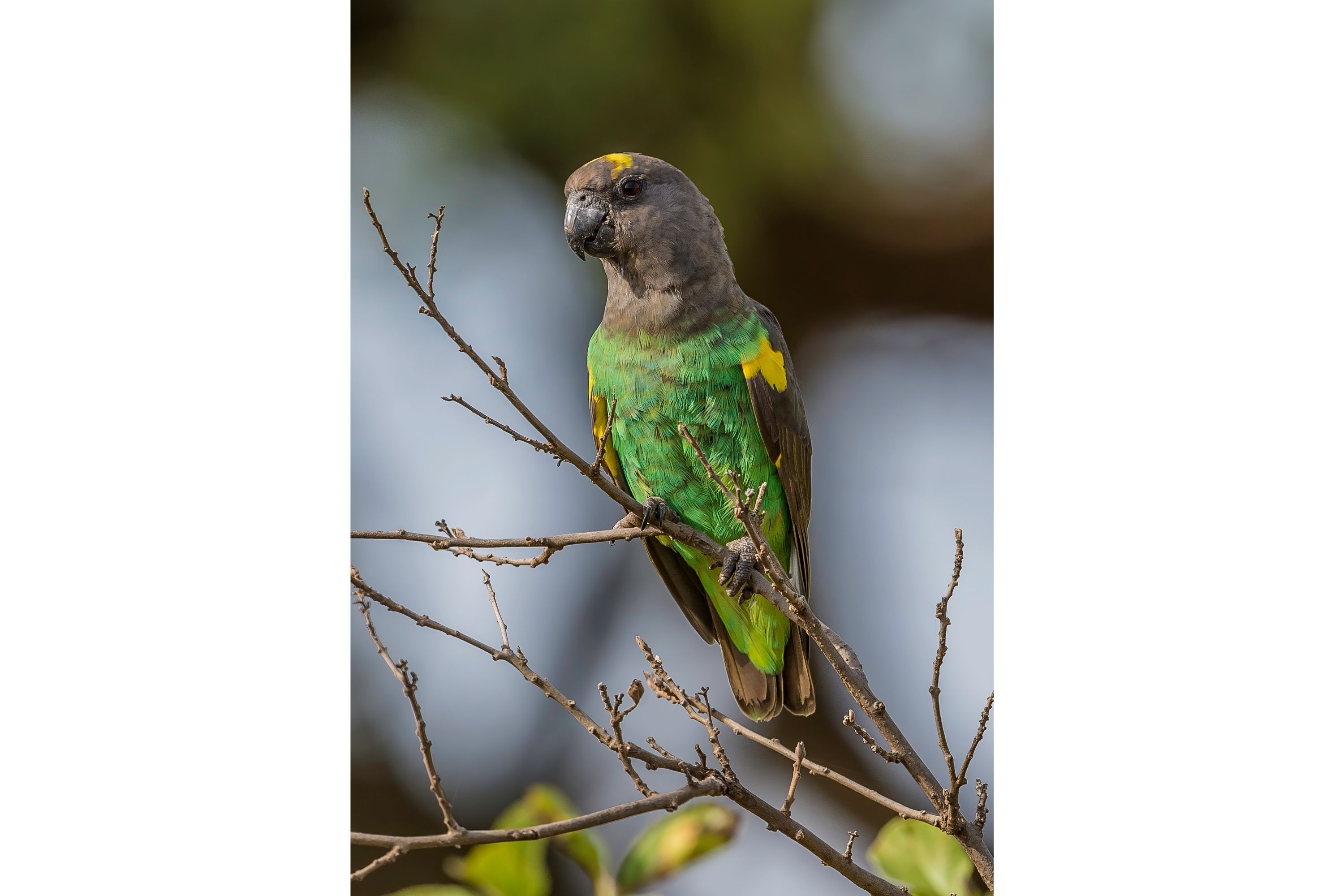Senegal parrot
(Poicephalus senegalus)

Description
The Senegal parrot (Poicephalus senegalus) is a parrot which is a resident breeder across a wide range of west Africa. It makes migrations within west Africa, according to the availability of the fruit, seeds and blossoms which make up its diet. It is considered a farm pest in Africa, often feeding on maize or millet. It is popular in aviculture. Senegal parrots are about 23 centimetres (9.1 inches) long, weigh about 120 to 170 grams (4.2 to 6.0 ounces). They have a relatively large head and beak for their overall size, and feathers form a short broad tail. Adults have a charcoal grey head, grey beak, bright yellow irises, green back and throat, and yellow underparts and rump. The yellow and green areas on a Senegal parrot's front form a V-shape resembling a yellow vest worn over green. Young Juveniles have dark grey, almost black, irises, which change to light grey. Senegal parrots are not sexually dimorphic, but there are some hypotheses which sometimes might help to determine the gender of adult birds: The V-shape of the vest is usually longer in females; in females the green area extends down over the chest to between the legs, whereas in males the tip of the green area ends midway down the chest. The female's beak and head are generally slightly smaller and narrower than the male's. The under-tail covert feathers (short feathers under the base of the main tail feathers) are generally mostly yellow in the male and generally mostly green in the female. Males are generally, but not always, larger and heavier than female birds. Senegal parrots are birds of open woodland and savanna. They flock most commonly in countries in West Africa. It is a gregarious species, continuously chattering with a range of whistling and squawking calls. Senegal parrots live an average of approximately 25–30 years in the wild, and have been known to live for 50 years in captivity. Because of its vast range in Africa, the wild Senegal parrot population is difficult to estimate. Nevertheless, in 1981 concerns about extensive trapping of wild parrots for the pet trade led to it being listed on appendix 2 of The Convention on the International Trade in Endangered Species (CITES), along with all parrot species. This has made the trade, import and export of all wild caught parrots illegal.
Taxonomic tree:







